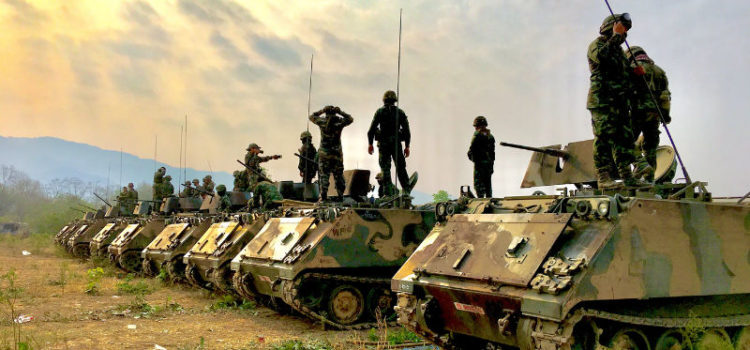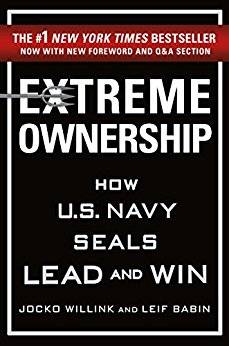

This article is an excerpt from the Shortform summary of "Extreme Ownership" by Jocko Willink and Leif Babin. Shortform has the world's best summaries of books you should be reading.
Like this article? Sign up for a free trial here .
You can be the best leader in the world, but you’re still human and you simply can’t do everything yourself. Decentralized Command is a form of delegating that allows leaders to stay focused on their unique job — leading the overall team in pursuit of the larger goal — by allowing each junior leader and team member under them to carry out her own unique job.
Decentralized Command
Leaders can only be effective at managing a limited number of people, generally about six to 10 people. To work efficiently, teams must be divided into smaller groups; senior leaders directly manage junior leaders, who directly manage teams of employees.
Senior leaders need to have an understanding of the larger goal and the plan to reach it. They must communicate this clearly to junior leaders, so that they, too, can understand the plan and the “why” (as we discussed in Chapter 3). Junior leaders have to understand the mission and how it ties in with the greater goal so that they can relay that to their teams and answer questions if anyone is unclear or skeptical of the plan.
With the understanding of the company’s mission and plan to achieve it, junior leaders must also be empowered to take action and make decisions that get the overall team closer to accomplishing that goal. A junior leader knows her team better than anyone else, and knows what will put her team in the best position to execute a plan. If a junior leader is empowered to act, she can keep her team moving efficiently toward the goal. This allows for the best decentralized command.
However, this doesn’t mean junior leaders should go rogue; they need to understand what falls within their authority and consult senior leaders on anything that lies beyond their authority. Furthermore, junior leaders need to keep senior leaders in the loop with important information and updates, so that the leaders — who are always responsible for keeping the big picture in mind — can make informed decisions.
The relationship between senior and junior leaders requires trust, confidence, and balance to successfully have Decentralized Command. Junior leaders must have confidence in their understanding of the mission and the “why,” and in their authority to make certain decisions. They must also trust that their senior leaders will support them and their decisions. Even if a junior leader makes a mistake in her decision making, the senior leaders can gain trust if they recognize the junior leader made that decision in an earnest effort to achieve the goal.
Senior leaders need to keep a balance between being too involved and too distanced. Leaders who are overly involved (e.g. micromanage) get too pulled into the details and lose sight of the bigger picture. Without a clear view of the broader goal and the team’s overall progress in reaching it, a leader loses the ability to direct the team and strategically adapt to changes. On the other hand, leaders who are too disconnected from the front lines are out of touch with what their team members are doing, and are unable to lead them.
Leaders need to be agile enough to move around and help where they are most needed at any given point; this means a leader’s role will change somewhat over the course of a mission, but she will also maintain a view of the team’s overall goal and progress. This allows for the best decentralized command.
Battle Story of Decentralized Command: A Leader Can Successfully Lead if He Isn’t Consumed in Smaller Details
The SEALs are conducting a huge operation that also incorporates two U.S. Army battalions with hundreds of soldiers each, a Marine Corps battalion, plus almost a hundred armored vehicles and military aircrafts. Willink can only lead a mission this large through Decentralized Command.
Willink has already trained and instructed the leaders under him to make decisions. He trusts their judgment to act in difficult situations, as well as their ability to empower the leaders under them to make strategic decisions. What’s more, he expects them to make decisions and not need to constantly ask what to do. Decentralized Command gives Willink the peace of mind that his junior leaders are taking care of all the details, allowing him to stay focused on the strategic mission.
Not only does Willink have confidence in his junior leaders, but those leaders also trust that Willink and other senior leaders will support their decision-making authority. That kind of mutual trust comes with time and experience. Willink has seen his junior leaders act wisely and strategically in past situations, and the junior leaders have gained confidence in themselves and in the way Willink has empowered them.
The operation entails taking hold of a major road between two especially hostile areas of Ramadi. During this mission, one SEAL platoon needs to use a different building than planned, so they alert Willink and make the necessary move, and Willink updates the rest of the cooperating forces. Sometimes, Willink’s junior leaders on the front lines need to adjust their location because the original plan is not feasible, or the map they used to plan logistics didn’t accurately show certain details (like the distance to the road or other buildings) so they need to adapt. Knowing the junior leaders will make the necessary adjustments, Wililnk can continue to focus on the overall mission.
As the mission continues, the U.S. troops detect possible enemy fighters moving into position to attack. Everyone is on high alert, and Willink gets a radio report that someone has spotted what appear to be enemy snipers on a nearby building. The forces are eager to shoot heavy fire at the building and eliminate the sniper threat, but knowing how easily mistakes and confusions can be made in the midst of urban battle, Willink calmly insists on doing his due diligence.
Willink identifies the building in which the enemy snipers are located (the U.S. forces all use a uniform map with each building in the area labeled with a number) and confirms that no U.S. troops are in that building; the platoon that moved location confirms they are in another building. But something still seems off to Willink. With time of the essence — everyone wants to take out the snipers before they have a chance to harm U.S. forces — Willink continues to delay firing at the building while he takes every precaution.
Willink asks the commander who spotted the snipers to again confirm the building by counting how many buildings between it and the next major intersection. When the commander counts the buildings, he realizes he has misidentified the building number; it is the same building where the SEAL platoon has relocated. The men they thought were enemy snipers are actually SEALs, and they had been moments away from vicious friendly fire.
If Willink had been consumed in smaller details of the operation, he might not have had the mental capacity or big-picture understanding to see the risk and avoid a disastrous mistake. The fact that his junior leaders were making the tactical decisions — and informing him of the changes — freed up Willink to keep his focus on the overall mission.
Business Application of Decentralized Command: Leaders Are Most Effective When Their Teams Are Not Too Small or Too Big
The regional president of an investment advisor group is reviewing the organizational structure of his team, including more than a thousand employees at dozens of branches. Each branch has a branch manager who is in charge of all the team members in that location. However, the large branches may have 20 or more employees, and the small branches only three.
The large branches have grown to their size because they are more successful, and that success is often owed to the strength of the manager. However, when branches grow too big, the managers can’t keep their focus on the big-picture and how the company is trying to grow; much of their attention goes to their high-performing employees and the day-to-day needs of the branch, and growth slows.
On the other hand, the smaller branches don’t generate enough revenue because they have so little staff…

———End of Preview———
Like what you just read? Read the rest of the world's best summary of "Extreme Ownership" at Shortform . Learn the book's critical concepts in 20 minutes or less .
Here's what you'll find in our full Extreme Ownership summary :
- What Extreme Ownership means, and why every responsible leader needs to get it
- How to get your team working smoothly together
- How leadership principles from Navy SEAL teams work in everyday business and life






